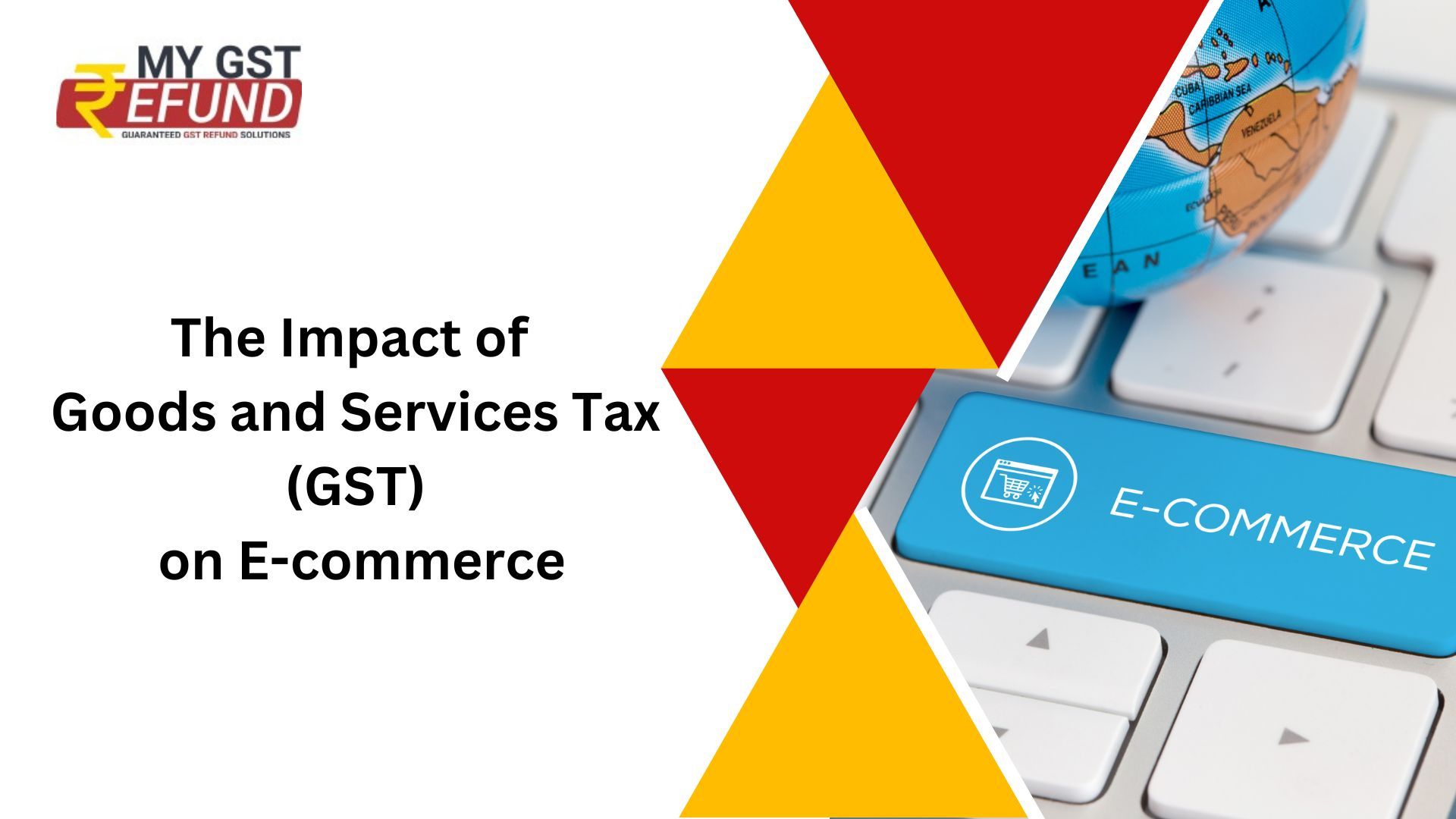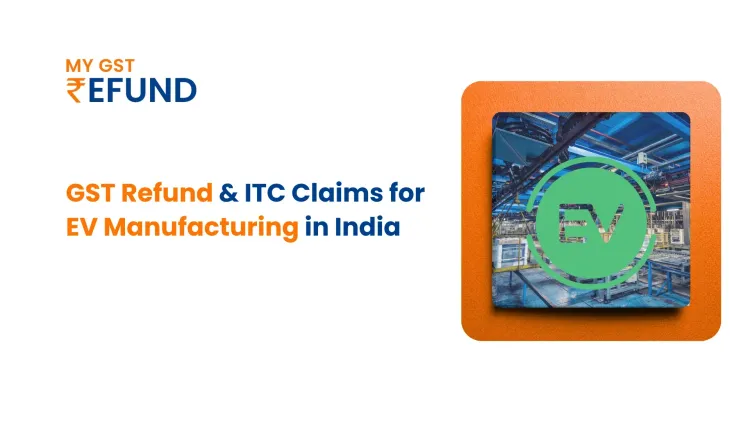The Impact of Goods and Services Tax (GST) on E-commerce
Published on: Fri Nov 03 2023
Goods and Services Tax (GST) stands as one of the most significant tax reforms in India, unifying various indirect taxes to create a single, comprehensive tax system. Its implementation in 2017 brought about a transformative impact on the e-commerce sector, altering the landscape of online trading, taxation, and compliance. This article aims to explore the implications of GST on e-commerce, examining its effects on businesses, consumers, and the overall digital marketplace.
Understanding GST and Its Relevance in E-commerce
Goods and Services Tax (GST) is a destination-based tax that subsumes various central and state taxes, unifying the tax structure. The fundamental principle of GST involves the taxation of the consumption of goods and services. In the e-commerce realm, GST applies to online transactions, covering the sale of goods, digital products, and services, impacting both domestic and international e-commerce activities.
Challenges Faced by E-commerce Entities Post-GST Implementation
Some of the key challenges faced by e-commerce businesses post-GST implementation:
1. Complex Compliance Requirements: GST introduced a complex set of compliance requirements. E-commerce businesses had to deal with multiple GST rates, each applying to different product categories. They were required to file regular GST returns, maintain detailed transaction records, and reconcile invoices with suppliers, making compliance a cumbersome and time-consuming task.
2. Tax Collection at Source (TCS) and Tax Deducted at Source (TDS): GST introduced the concept of TCS and TDS for e-commerce operators. E-commerce platforms were required to collect a percentage of the transaction value as TCS, and sellers were subject to TDS. This created an additional layer of compliance, as well as some confusion regarding the exact applicability and procedures.
3. Impact on Pricing Strategies: The changes in the tax structure had an impact on the pricing strategies of e-commerce businesses. They needed to recalculate prices to incorporate the GST and account for input tax credits. This sometimes led to fluctuations in product prices, which could affect consumer behavior and market competition.
4. Challenges for Small and Medium-Sized Businesses: Small and medium-sized e-commerce businesses faced more significant challenges in adapting to GST due to limited resources and technical expertise. The compliance burden, especially for those selling across state borders, could be overwhelming.
Impact on E-commerce Market Dynamics
The introduction of GST brought a paradigm shift in the e-commerce market dynamics. The tax reform influenced pricing strategies, supply chain management, inventory distribution, and the overall cost structure. Small and medium-sized e-commerce businesses faced initial disruptions in adjusting to the new tax regime, impacting their competitiveness against larger market players.
Consumer Behavior and Pricing Strategies in the GST Era
GST altered consumer behavior and purchasing patterns in the e-commerce domain. With the implementation of uniform taxation, price transparency, and reduced tax cascading, consumers experienced changes in product prices and overall shopping experiences. E-commerce platforms adapted their pricing strategies to accommodate GST, sometimes resulting in fluctuations in product costs.
Compliance and Technological Solutions for E-commerce GST Implementation
Compliance with Goods and Services Tax (GST) regulations in the e-commerce sector is essential for businesses to operate smoothly and avoid legal issues. Many e-commerce companies have turned to technological solutions to simplify and streamline the GST implementation and compliance process. Here are some of the compliance challenges and the technological solutions used in the e-commerce industry:
Challenges in GST Compliance for E-commerce:
1. Multi-State Operations: E-commerce businesses often operate in multiple states. Managing GST compliance across different states with varying tax rates and regulations can be complex.
2. Tax Calculation: Accurate calculation of GST on each transaction, factoring in the correct tax rates, input tax credits, and exemptions, is crucial.
3. Returns Filing: E-commerce entities must file regular GST returns, which require meticulous record-keeping and reporting.
4. TCS and TDS Compliance: E-commerce platforms are responsible for collecting Tax Collection at Source (TCS), and sellers may be subject to Tax Deducted at Source (TDS). Complying with these provisions can be challenging.
5. Input Tax Credit: Ensuring proper documentation and reconciliation of input tax credit on input costs is vital to minimize tax liability.
Technological Solutions for GST Compliance in E-commerce:
1.GST Compliance Software: E-commerce businesses often use specialized GST compliance for E-commerce software that automates various aspects of GST compliance, including tax calculation, return filing, and reconciliation. These software solutions are designed to handle multi-state operations and keep up with changing tax rates and rules.
2. ERP Systems: Many e-commerce companies have integrated Enterprise Resource Planning (ERP) systems that include GST modules. These ERP systems help manage inventory, sales, and financial data, ensuring GST compliance from a centralized platform.
3. GSTN Portal: The Goods and Services Tax Network (GSTN) portal, set up by the government, allows e-commerce entities to manage their GST compliance, including return filing, through an online platform. Many businesses use this portal to file their returns and maintain compliance.
4. Automated Invoicing: E-commerce platforms often use automated invoicing systems that generate GST-compliant invoices with the correct tax rates, HSN codes, and other required details. These invoices are crucial for compliance and record-keeping.
Impact on E-commerce Sellers
GST has simplified the tax compliance process for e-commerce sellers. Previously, they had to deal with multiple state-level taxes, but with GST, they can avail of a unified tax system. However, sellers with operations in multiple states must register for GST in each state where they operate.
Future Prospects and Evolution of E-commerce under GST
The future prospects of e-commerce under GST point towards continued evolution and adaptation. As the digital marketplace matures and tax policies evolve, there may be further reforms, clarifications, and amendments in GST laws specifically addressing e-commerce concerns. The shift towards more advanced technologies, including blockchain and AI, may also impact GST implementation in e-commerce.
Are you Looking for GST Refund Service? MYGST REFUND offers GST refunds on business, exporters , TCS And TDS refund, Refund under Inverted Duty Structure, GST Notices & Technical Replies and many more if your GST application is rejected. Get in touch with us today.
Related Posts




